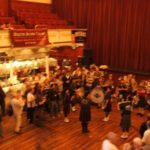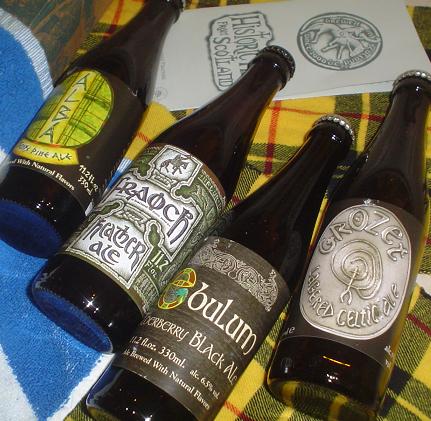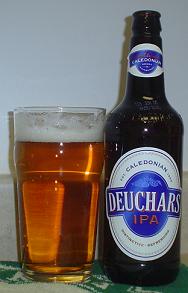
The trend of splitting up European nations into smaller units seems to be over for the time being. There is Kosovo, of course. And then, possibly, a part of a union that has lasted for centuries, and where nationalism seemed to us outsiders to be mostly a joke. Scotland. I’ve been in Scotland before, but that was about twenty years ago, so I looked forward to a brief visit in August. The last time I went to Edinburgh, this time I had an invitation to go to Glasgow. It is actually a city that’s very easy to get to from Oslo, Ryanair flies several times a week to Prestwick, and even if a $1 ticket ended up being $100 for a return ticket, including taxes and charges, you can hardly complain about the price. And the secondary airports used by Ryanair and other low cost carriers are actually very comfortable, you get through security in seconds rather than hours.
And an extra bonus is that you leave Prestwick airport via a walkway to the railway station where you get a splendid view of moorlands, stone houses and the Irish Sea. If you are lucky, you will also have picked up a bottle of Scottish ale from Peckhams delicatessen in the terminal building.
-You cannot drink this in the airport, sir.
-A plastic glass? For the train? Here you are! A Styrofoam coffee cup for the train journey.
The train is filled with Norwegian golfers, and the landscape seems to be split evenly between heather, grazing land for cattle and golf courses. Looks like a successful mix. I enjoy my bottle of Dark Island Dark ale. A rich ale at 4.6 %, it has treacle and spices. I find myself wondering if a stronger version of this would have been even better. I am lucky to get hold of a bottle of the same beer aged in whisky barrels the next day, which now waits in my cellar to be tasted.
 Arrival in Glasgow forty minutes later. The Toby Jug is right across the street from the Central Station, and the Friday afternoon crowd is well into their pints. I manage to squeeze both myself and my suitcase into the pub, and enjoy two halves of cask Scottish ale, Kelburn Red Siddy and Pentland IPA. Both are fine beers, though maybe a bit on the sweet side for my liking. But I can’t expect every brewer to have as much of a hops hangup as myself. I find my hotel and meet up with the rest of the ratebeer crowd, who have done an Edinburgh pub crawl and are quite jolly when we order dinner. I try my best to catch up with them, and over a period of 30 hours or so, I manage to see quite a few of the pubs of Central Glasgow – at least the ones where there is cask ale on tap.
Arrival in Glasgow forty minutes later. The Toby Jug is right across the street from the Central Station, and the Friday afternoon crowd is well into their pints. I manage to squeeze both myself and my suitcase into the pub, and enjoy two halves of cask Scottish ale, Kelburn Red Siddy and Pentland IPA. Both are fine beers, though maybe a bit on the sweet side for my liking. But I can’t expect every brewer to have as much of a hops hangup as myself. I find my hotel and meet up with the rest of the ratebeer crowd, who have done an Edinburgh pub crawl and are quite jolly when we order dinner. I try my best to catch up with them, and over a period of 30 hours or so, I manage to see quite a few of the pubs of Central Glasgow – at least the ones where there is cask ale on tap.
And how is the scene? Basically, you have two types of pubs selling cask ale. You have the Wetherspoon chain pubs, large establishments where the architecture is often impressive. they tend to be converted banks or offices, often with fine details intact. The crowds are, however, not quite as stylish as the pubs. The business concept is to offer cheaper drinks than the competition, including beer. This means you have a busy just-after-office-hours type of crowd in the early evening, who tend to behave themselves. Later you get the serious drinkers. Large pitchers of vodka and Red Bull, Endless supplies of alcopops and cider. Day-glow green shots ordered by the dozen. But, even late on Saturday evening, these pubs were not full, which means that there are too many of them in town, or, even, that the punters want something else, even if they have to pay an extra 50 p for a pint. In addition, you have a number of smaller pubs. The Toby Jug has been mentioned, The Horseshoe Bar looked inviting, too, but did not hold any temptations ale-wise. If you want the best range of well kept cask ale in town, you should head straight for the Blackfriars. You may have to fight for a table, but I can assure you it will be worth it. A good range of Scottish beers on tap, and, at least when I was around, there were some amazing bottled beers, too. Ask for Tom, and tell him I sent you, he’ll get you something special.
The brewing scene? There seems to be breweries just about everywhere – the Hebrides, the Orkneys, you name it. The most exciting beers I got to try came from Brew Dog, a micro in Aberdeenshire. They age some of their beers in whisky casks, with magnificent result. They sell bottled beers by mail order in the UK, and I intend to have a dozen bottles waiting for me at the hotel the next time I land in the UK. Of the cask ales, the Kelburn beers, brewed in Glasgow, are widely available, and they seem to do a fine range.
What else? You understand approximately 50 per cent of what people say to you. Maybe received pronunciation was not such a bad idea after all. You feel slightly retarded when you try to make out what they actually try to tell you in their broad accent. The pub food was good, though I did not get any haggis. Luckily the same Peckham shop at the airport had some, so I have some plans involving haggis, beer and whisky. But I had a full Scottish breakfast, including black pudding. A bit too rich to have every day, though!










